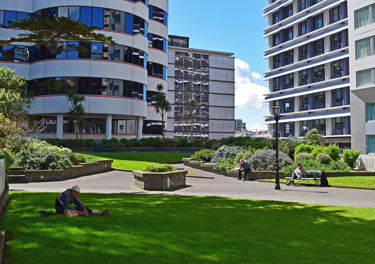Preparing our cities for a greener future
“We are the first generation that can end poverty and the last generation that can take steps to avoid the worst impact of climate change,” UN Secretary General Ban Ki-Moon has said. “Future generations will judge us harshly if we fail to uphold our moral and historical responsibilities.”
"It’s not only government. Government cannot do it alone. The UN cannot do it alone. There should be full partnership… then we should have civil society coming together. Even one normal citizen – they have a role to play. All these policies should be people centered – without people they are meaningless.”
Are our cities ready for a greener future? What should greener cities look like? Is climate change still important and relevant?
Our existing green spaces perform a critical role in air-conditioning our cities by default.
Their role can increase dramatically through small changes (such as planting more trees and encouraging ecosystems to regenerate,) with a stronger focus on adapting the city’s streets. We need to adjust the optics on what our streets and highways achieve and the impact these critical assets have on the greening of our cities.
A typical city street is mostly paved with hard surfaces. Typically, this can be as high as 95 per cent of impervious surfaces such as footpaths, bitumen, kerbs and gutters. In our open spaces, it is mostly reversed. However, many of our valued opens spaces are sports fields, which often have limited environmental value. For example, irrigated turf offers little in the way of habitat and species diversity, nor does it have ecological value.
Put simply, green infrastructure is a design-led approach aimed at climate adaptation on a city wide scale, offering integrated stormwater management, increased biodiversity, reduced urban heat island effects, cleaner water and soils, opportunities for renewable energy production, and increased habitat production. It also allows for human benefits such as better quality open spaces, increased health benefits, improved recreation and connected shade and amenity in our city’s spaces.
What does this look like? It can be as simple as cutting existing kerbs to new garden beds to take the first charge of stormwater, retarding the flow, reducing the pressure on the existing pipes, filtering particulates out, watering the garden, and dealing with certain pollutants almost at their source.
It can mean median strips performing greater roles as flood controllers, adding biodiversity, species diversity, reclaiming impervious spaces, creating habitats for insects including bees, adding visual value to our streets, creating interest and ownership from adjacent businesses and residents.
Who doesn’t like a nice garden? Our city streets are occupied by all of us, and we should care more for them. We have a role in creating great streets for ourselves and for our fellow citizens. Simply caring about our streets is a great start.
Written by Daniel Bennett, Vice-President Australian Institute of Landscape Architects. Reproduced with permission.

21-Jul-2015


